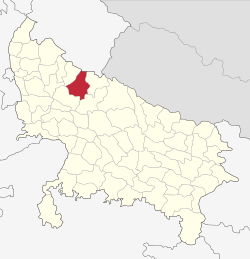It has a relatively small proportion of its net sown area unirrigated, indicating poor irrigation demand. Overall, water availability for irrigation in the district (based on ground water development and long-term trends of water level decline) is within the safe limit, enhancing long-term sustainability of solar pumps. The number of medium and long-term institutional loans disbursed in the district is comparatively large, suggesting the availability of credit amongst farmers for potential investments. There is a comparatively high level of farm mechanization in the district, implying a positive outlook towards progressive technologies amongst the farmers. The district has a relatively high proportion of small and marginal farmers.
Deployment Approaches
| Approaches | Feasibility |
|---|---|
| Individually owned off-grid solar pumps | Limited Suitability |
| Solarisation of feeders | Limited Suitability |
| Solar based water as a service | Limited Suitability |
| Promote 1 HP and sub-HP pumps | Limited Suitability |
| Solarisation of individual grid-connected pumps | Limited suitability |
Individually owned off-grid solar pumps
Limited Suitability
The district has ground water available within the safe limit, a comparatively high concentration of diesel pump users, and a relatively high disbursement of institutional credit, but low crop revenue per holding. Greater support, either through subsidies or credit, would be required to enable farmers to adopt solar pumps.
| Parameter | Value | Percentile |
|---|---|---|
| Number of cultivators reporting use of diesel pumps | 127,583 | 90 |
| Water Availability Index | 0.9 | 80 |
| Crop revenue per holding (INR) | 80,761 | 50 |
| Medium and long term institutional credit disbursed in a year (in INR Crore) | 579.7 | 95 |
Solarisation of feeders
Limited Suitability
The district has a relatively high penetration of electric pumps, and its DISCOM incurs a high cost for supplying power, but the district has a comparatively low extent of feeder segregation. Solarisation of the feeders will only be possible once the district separates agricultural feeders from the rest.
| Parameter | Value | Percentile |
|---|---|---|
| Actual cost of power supply (INR/kWh) | 6.83 | 89 |
| Extent of feeder segregation | 0% | 0 |
| Proportion of cultivators reporting use of electric pumps | 2% | 29 |
Solar based water as a service
Limited Suitability
Groundwater availability in the district is within safe limit and the concentration of small and marginal farmers is comparatively high, but the proportion of unirrigated area is relatively low. A solar-based water service will have to compete with existing sources of irrigation.
| Parameter | Value | Percentile |
|---|---|---|
| Water Availability Index | 0.9 | 80 |
| Proportion of small and marginal cultivators | 93% | 71 |
| Unirrigated net sown area as a share of total net sown area | 5% | 9 |
Promote 1 HP and sub-HP pumps
Limited Suitability
The district has groundwater availability within safe limit, a rather high concentration of marginal farmers, and a comparatively high disbursement of institutional credit to marginal farmers, but the proportion gross cropped area under horticulture crops is relatively low. Farmers should be incentivised to grow horticulture crops based on the agro-economic suitability of the region and market linkages to improve their revenue, making small sized pumps viable, by improving their capacity utilisation.
| Parameter | Value | Percentile |
|---|---|---|
| Area under horticulture crops as a share of gross cropped area | 3% | 34 |
| Water Availability Index | 0.9 | 80 |
| Proportion of marginal cultivators | 79% | 74 |
| Medium and long term institutional credit disbursed in a year (in INR Crore) | 579.7 | 95 |
Solarisation of individual grid-connected pumps
Limited suitability
The district has a relatively high penetration of electric pumps, ground water available within the safe limits, and power supply to its agricultural consumers is heavily subsidised, but the district has a comparatively low extent of feeder segregation. Solarisation of individual grid-connected pumps will only be possible once the district separates agricultural feeders from the rest.
| Parameter | Value | Percentile |
|---|---|---|
| Water Availability Index | 0.9 | 80 |
| Actual cost of power supply (INR/kWh) | 6.83 | 89 |
| Extent of feeder segregation | 0% | 0 |
Leveraging Solar Pumps to Promote Policy Objectives
If you are deploying solar pumps in this district then you can further these policy objectives.
Doubling Farmers’ Income – Capital Investment
Given the high concentration of small and marginal farmers, and their relatively better access to institutional credit, the district is suitable for doubling farmers’ income through capital investment. Solar pumps could be one of the farm technologies to invest in for farmers, especially 1 HP or sub-HP pumps for marginal farmers.
| Parameter | Value | Percentile |
|---|---|---|
| Proportion of small and marginal cultivators | 93% | 71 |
| Medium and long-term institutional credit disbursed in a year to small and marginal cultivators (in INR Crore) | 579.7 | 95 |
Doubling Farmers’ Income – Crop Diversification
In the district, horticulture crops occupy a relatively low proportion of gross cropped area, indicating an opportunity for growing more high value non-staple crops. Solar-powered irrigation could be an alternative source of reliable irrigation, making it easier to achieve crop diversification and enhance farmers’ incomes.
| Parameter | Value | Percentile |
|---|---|---|
| Area under horticulture crops as a share of gross cropped area | 3% | 34 |
National Mission on Oilseeds and Oil Palm (NMOOP)
The relatively low share of oilseeds and oil palm crops under gross sown area in the district makes it a suitable candidate for promoting NMOOP. Solar pumps could meet irrigation needs for these crops and help farmers diversify their yields beyond cereals.
| Parameter | Value | Percentile |
|---|---|---|
| Area under oilseeds as a share of total cropped area | 42 |


